Since then, the province has continued to issue many policies with the determination to open a new page for the development of community-based tourism .
View from the East and West models
When the Mo Hra-Dap community tourism product was first formed, it had some exciting days serving the first groups of tourists in the trial tour. The story of tourism was talked about by people everywhere, anytime, with excitement and anticipation for the changes from a completely new type.
Farmers who have only known farming all their lives are bewildered when welcoming visitors for the first time, introducing cultural heritages, and serving traditional cuisine to strangers. But after the busy days of trial tours, the support project ended, and new difficulties were gradually recognized when people "made it on their own".
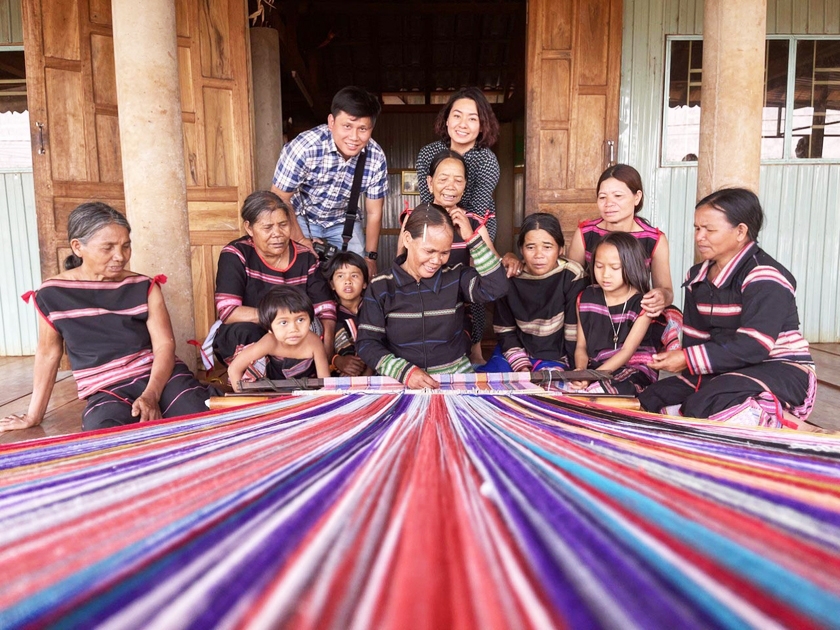 |
The Brocade Weaving Club associated with community tourism in Ia Mo Nong commune (Chu Pah district) attracts many tourists to visit and experience. Photo: MC |
According to Ms. Tran Thi Bich Ngoc - Cultural and Social Officer of Kong Long Khong Commune: After its launch, the Mo Hra-Dap Community Tourism product also received many other support programs. But in reality, tourism activities were continuously interrupted due to the Covid-19 pandemic and many other factors. When tourism opened, in early 2023, the village continued to receive a pilot project under the Rural Tourism Development Program for the period 2021-2025 and the One Commune One Product (OCOP) Program of the Government . It is expected that by the end of 2025, the new investment items will be completed.
“As the province’s first product on community tourism, the biggest difficulty now is that people still have insufficient awareness of this type of tourism despite having received a lot of training. Without someone to connect and support, people still cannot do it themselves, do not know how to promote the product, attract tourists. Moreover, due to the continuous interruption in tourism activities, some people have “forgotten” their skills. Therefore, before reopening to welcome guests, we must strengthen the entire framework of the village and improve the activities of the groups and teams,” said Ms. Ngoc.
Mr. Dinh Van Brech, Deputy Head of the Management Board of Mo Hra-Dap Community Village, said: “People participate in tourism with the hope of earning more income to improve their lives and develop the economy. But there are times when the village has no visitors or income, so they return to their fields and are no longer interested in participating.”
In the West of the province, Kep village, Phung village (Ia Mo Nong commune, Chu Pah district) has become a favorite DLCCĐ spot for those who love Central Highlands culture, especially photographers. This is also a success story from changing the mindset and way of doing of the people, in which there is a great contribution and inspiration of Ms. H'Uyen Nie - an Ede ethnic girl.
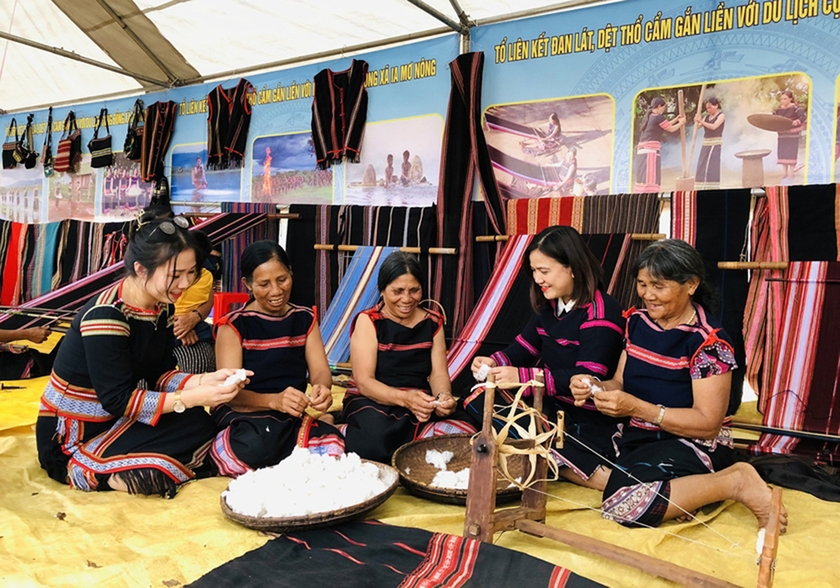 |
People participate in a cotton spinning experience at a market in Ia Mo Nong commune, Chu Pah district. Photo: Tran Hien |
With her dynamism and resourcefulness, Ms. H'Uyen Nie has led the Jrai community to do tourism with very authentic experiences and increasingly professional services. Since tourism opened, Ia Mo Nong Community Tourism Area has always been bustling with tourists.
Among them, many tourist groups are photographers from provinces and cities across the country and international groups. Visitors to the village can visit the tomb house, the water drop, enjoy gongs, traditional cuisine by the lake, experience traditional weaving and weaving with artisans in the traditional stilt house, and also buy products as gifts.
During the coffee picking season and the rice harvest season, visitors can carry baskets with the locals to the fields to experience long-standing agricultural activities. The cultural life and daily labor of the people are "carried" intact into tourism activities with the very harmonious coordination of each department, bringing authentic experiences to visitors. Activities are also regularly updated on the Facebook page "Ia Mo Nong Commune Community Tourism Village" to contribute to spreading and promoting tourism strongly.
New page for DLCĐ
Over the years, the network of villages with potential for community tourism development has changed a lot. There are villages that used to be very attractive on the tourist map but were then completely "erased" from the tours and routes of the travel industry due to concreting, lost identity or poor products and services. But there are also villages that, thanks to the dynamism of the community, can make a breakthrough in community tourism development. However, community tourism development still faces obstacles even though Gia Lai is assessed to have a lot of potential for this type.
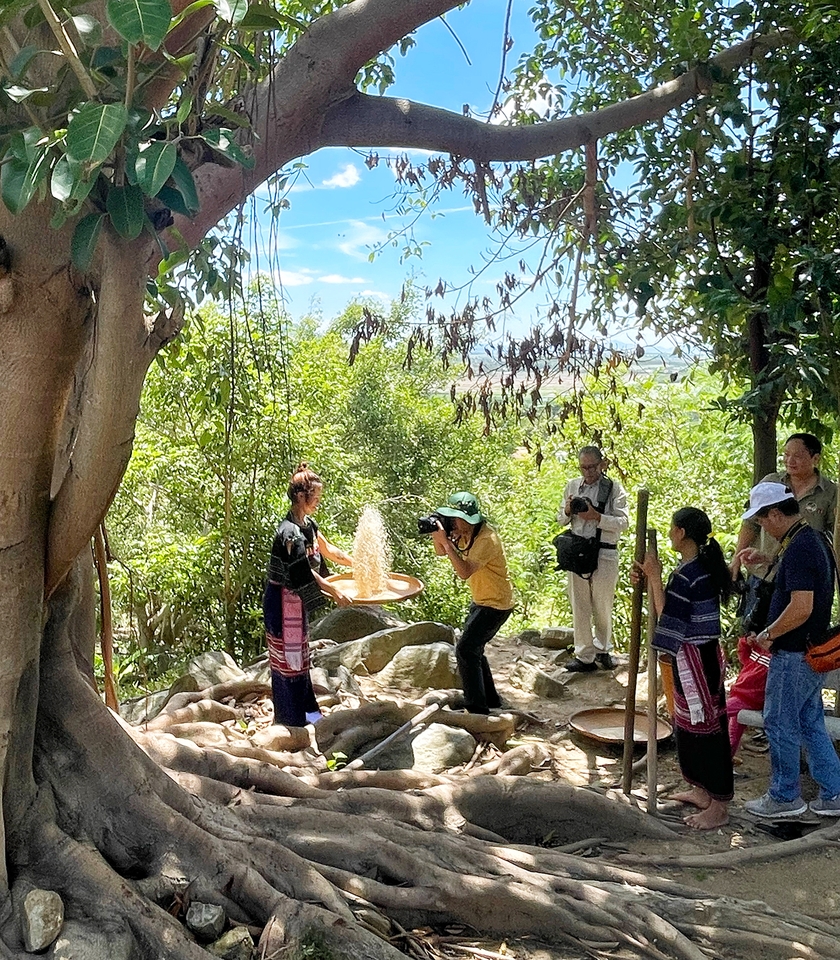 |
People of Stor village (To Tung commune, Kbang district) reenact daily activities to serve tourists. Photo: MC |
Many policies on community tourism development have been issued by the province with the determination to realize the goal of developing humanistic tourism associated with the new rural construction program.
Last May, the Provincial People's Committee issued Plan No. 1103/KH-UBND on community tourism development until 2030. The plan clearly stated the priority of investment in technical facilities for tourist destinations that are being exploited but have not yet completed services such as Mo Hra-Dap village and Stor village (To Tung commune, Kbang district).
In addition, some potential villages are also included in the plan such as: Op village (Hoa Lu ward), Ia Nueng (Bien Ho commune), Wau (Chu A commune), Teng 1 (Tan Son commune, Pleiku city), Kep, Al (Ia Mo Nong commune), Ia Gri (Chu Dang Ya commune, Chu Pah district), De Kjieng (Ayun commune), Po Yau (Lo Pang commune), De Kon (Hra commune, Mang Yang district).
As a model of community-based tourism, Mo Hra-Dap village continues to receive an investment of 14.5 billion VND from the State budget to implement a pilot model of developing OCOP products on community-based tourism. Some items are being implemented such as: building communal houses, planting trees in the campus, expanding roads... With large investment resources, the community-based tourism product of Mo Hra-Dap village will be completed in 2025.
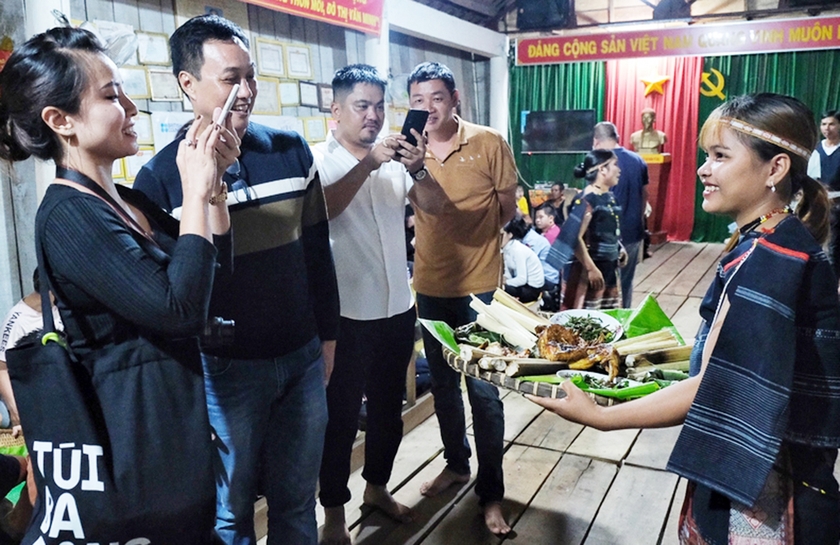 |
Mo Hra-Dap Village (Kong Long Khong Commune, Kbang District) is the first community tourism model in the province built from a support and connection project towards sustainable development. Photo: MC |
According to tourism experts, choosing a pilot model of community-based tourism to focus on investment and construction is the right way. However, the implementation process needs to limit the impact on the environment, especially avoiding concreting. At the same time, focus on investing the main resources for the subject of tourism activities, which is the community. Chairman of the Vietnam Community-based Tourism Association Pham Hai Quynh once led a famtrip group of nearly 100 travel agencies to survey Mo Hra-Dap community-based tourism.
Mr. Quynh commented: “We have surveyed the DLCĐ across Vietnam. With a dense network of DLCĐ villages in the Truong Son-Tay Nguyen region, to compete, we need to create a difference. In Mo Hra-Dap, the cultural values and typical cuisine are well preserved by the community. It can be said that to build a DLCĐ product, we need to exploit both intangible and tangible values, harmonizing those factors, which are preserving cultural identity, natural landscapes associated with economic benefits, and long-term livelihoods for the people.
So, we need to have a way of doing things, not large resources. And when we have investment resources, we need to invest in tangible values, not just infrastructure."
Master Huynh Cong Hieu, one of the tour guides from Ho Chi Minh City who conducted a trial tour of the community tourism in Mo Hra-Dap village when the product was launched, said: “The people of Mo Hra-Dap village have known how to do tourism for a long time, but at this stage, it needs to be developed at a higher level, focusing more on the experience factor. The most important thing is to build a community tourism product in Mo Hra-Dap that is clearly different and not overlapping, which will urge tourists to come and experience it.”
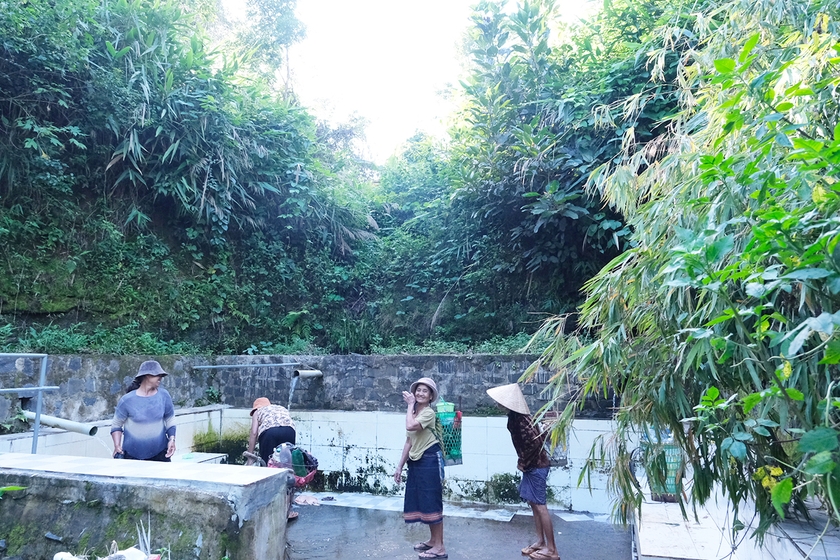 |
Afternoon falls at the water drop of Ia Nueng village (Bien Ho commune) - the village that Pleiku City has issued a project to build a community tourism village. Photo: MC |
As a central urban area with the characteristics of a “village within the city”, Pleiku City has also issued projects to build community-based tourism products in Op village (Hoa Lu ward) and Ia Nueng village (Bien Ho commune). However, the city is still “going slowly but surely”. Because the “village within the city” characteristic is both a strength and a challenge in developing community-based tourism due to the high speed of urbanization, making it difficult to maintain identity.
At the conference on rural tourism development organized by the Provincial People's Committee, Mr. Nguyen Huu Sung - Vice Chairman of the People's Committee of Pleiku City - shared: "The city is very determined and has invested a large amount of resources to be able to build worthy community tourism products. However, this is a fairly new type of tourism, the city is still looking for a suitable direction.
In addition to the 6 specific solutions proposed to develop this type, we will invite experts and long-time experienced tourism businesses to the villages to survey and advise the city on what to do and how to build truly attractive and different community tourism products.
Source: https://baogialai.com.vn/trang-moi-cho-du-lich-cong-dong-post290935.html


![[Photo] Opening of the World Cultural Festival in Hanoi](https://vphoto.vietnam.vn/thumb/1200x675/vietnam/resource/IMAGE/2025/10/10/1760113426728_ndo_br_lehoi-khaimac-jpg.webp)

![[Photo] Unique Phu Gia horse hat weaving craft](https://vphoto.vietnam.vn/thumb/1200x675/vietnam/resource/IMAGE/2025/10/10/1760084018320_ndo_br_01-jpg.webp)


![[Photo] Ho Chi Minh City is brilliant with flags and flowers on the eve of the 1st Party Congress, term 2025-2030](https://vphoto.vietnam.vn/thumb/1200x675/vietnam/resource/IMAGE/2025/10/10/1760102923219_ndo_br_thiet-ke-chua-co-ten-43-png.webp)




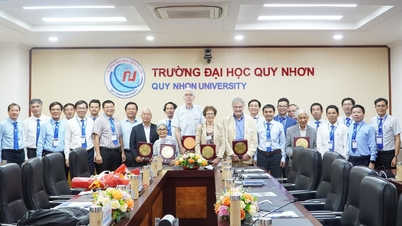

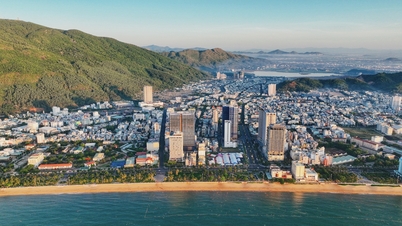






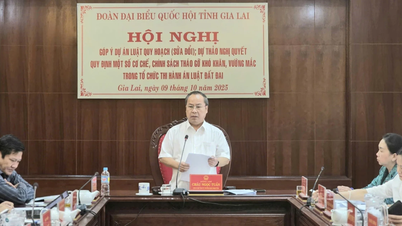





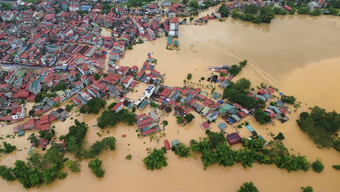
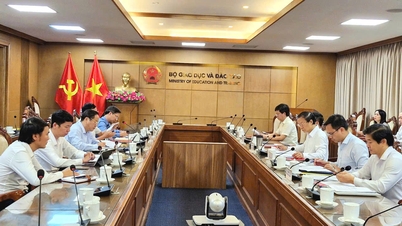
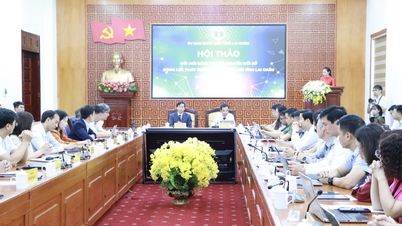





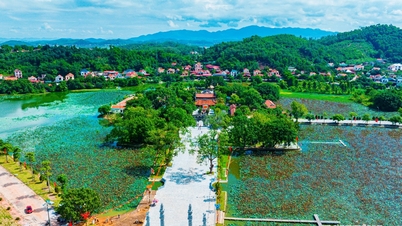


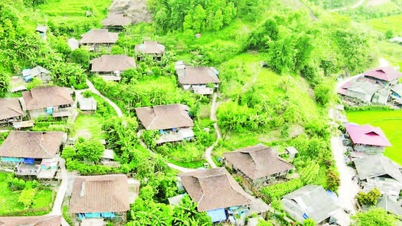

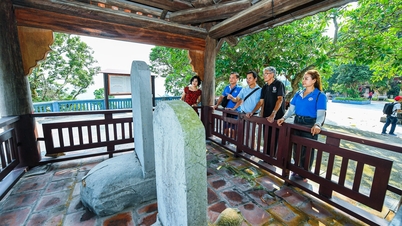
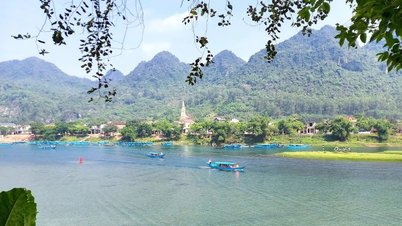





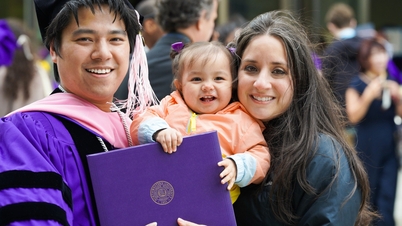





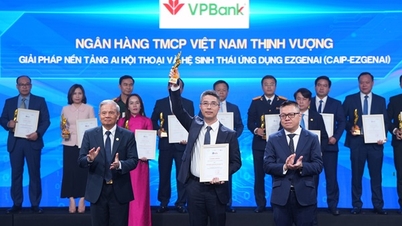



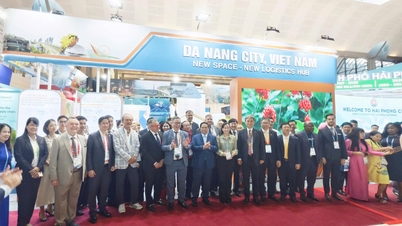







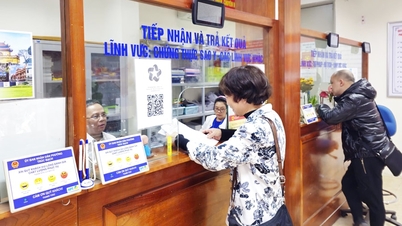





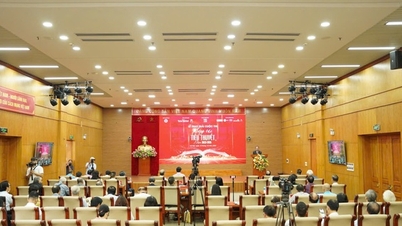
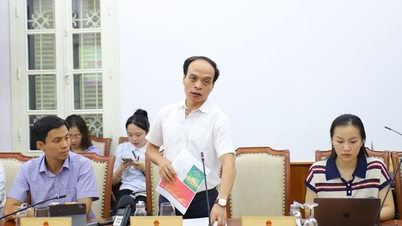





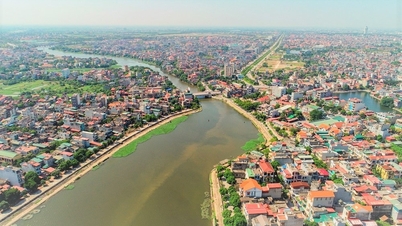


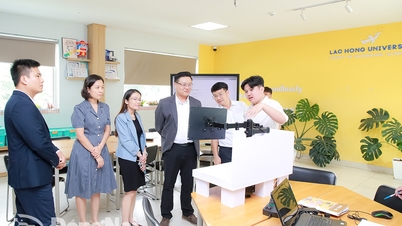

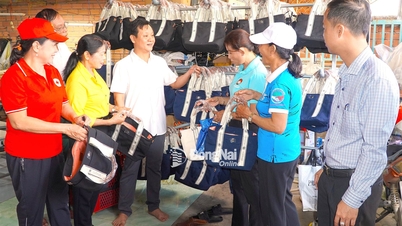
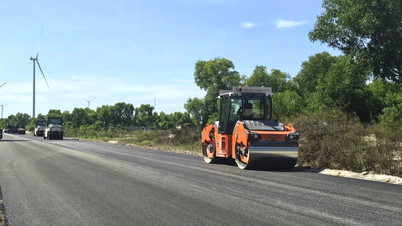

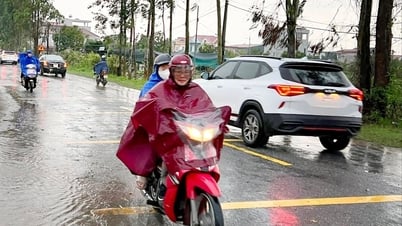










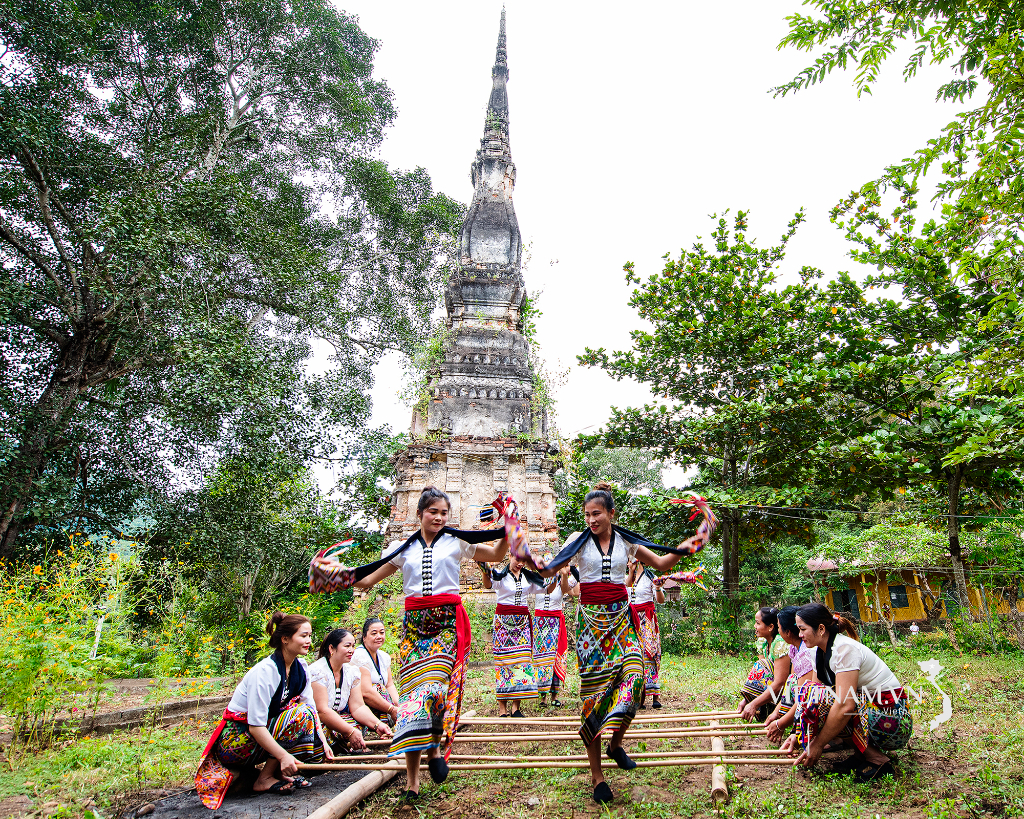

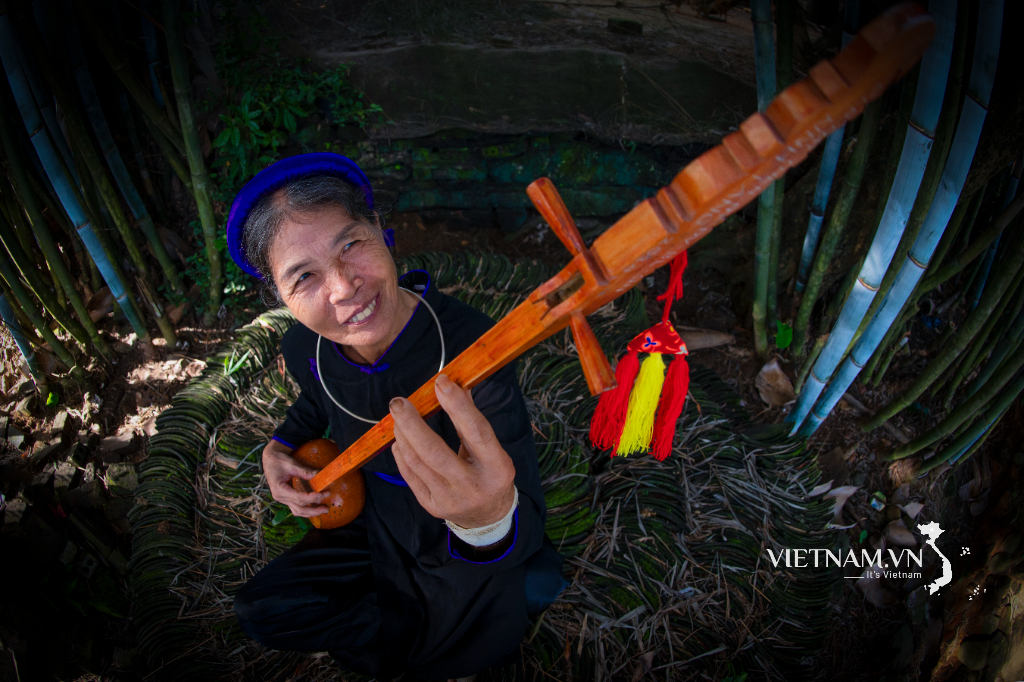

Comment (0)